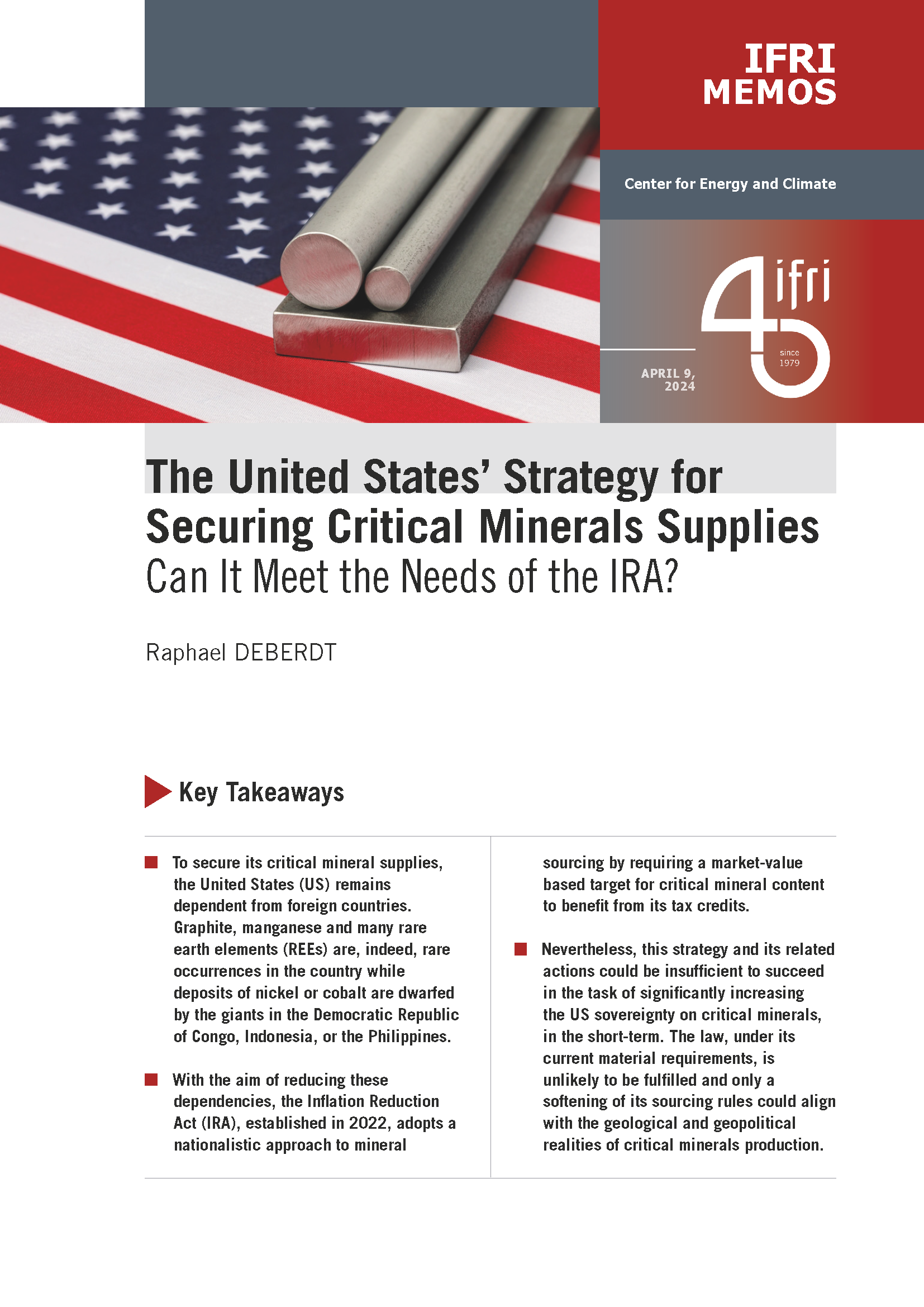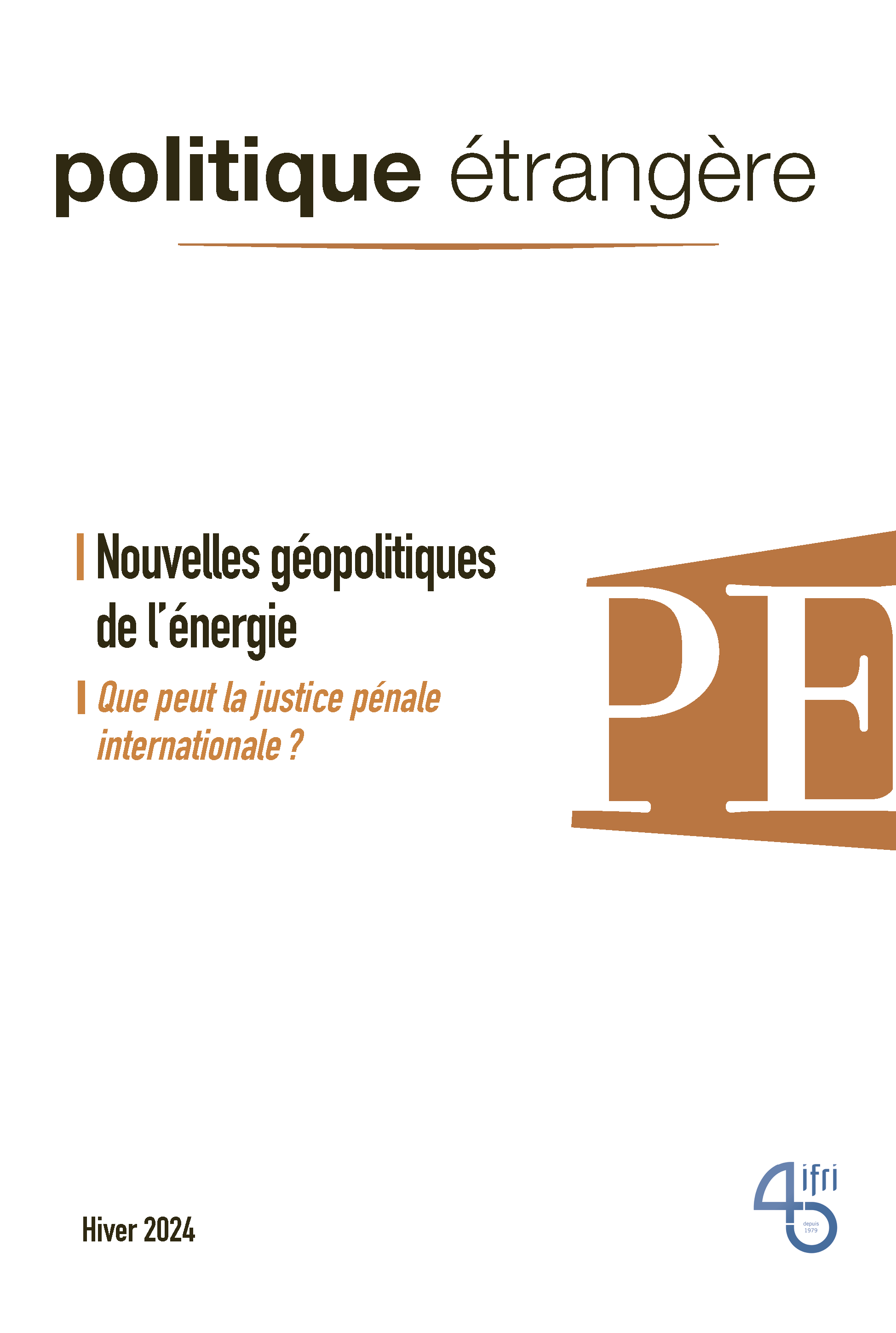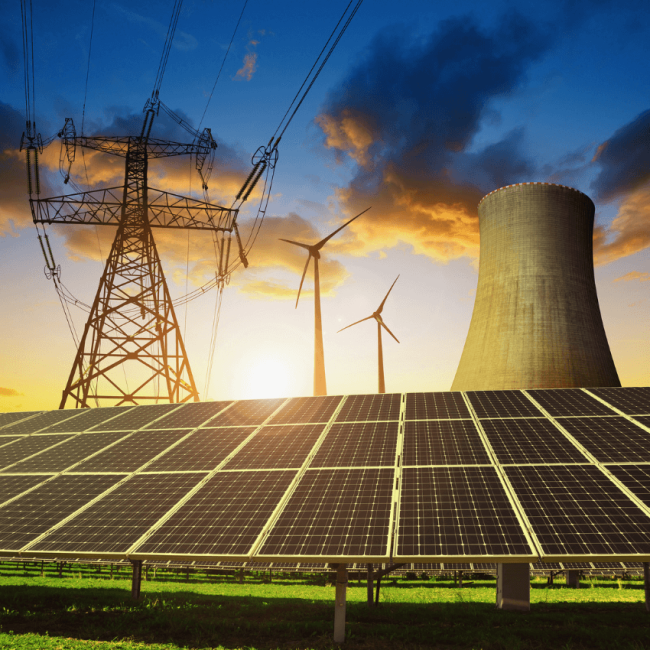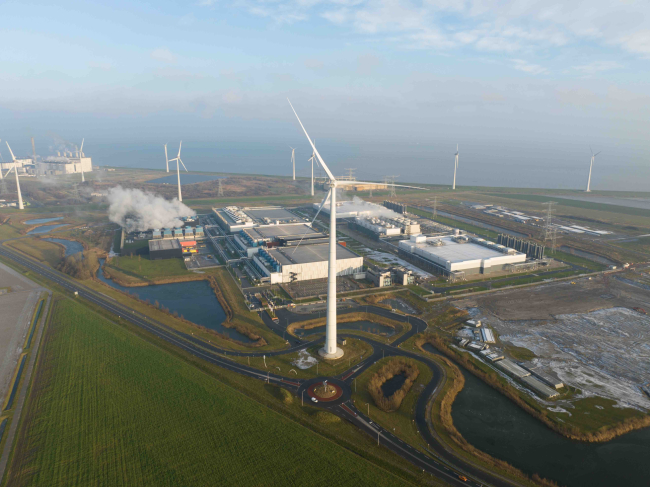The United States’ Strategy for Securing Critical Minerals Supplies: Can It Meet the Needs of the IRA?

The United States (US) reliance on foreign supplies of raw and processed critical minerals is pressing Washington to devise a strategy to secure short-, medium- and long-term solutions. Pressure only increased with the booming demand spurred partly by the Inflation Reduction Act’s (IRA) policies.

The US goal to become carbon pollution-free electricity by 2035 and reach net-zero greenhouse gas emissions by 2050 requires a complete overhaul of the structure of critical minerals production and supplies within the country as well as abroad to meet future demand and build resilience from China. This Memo assesses recent progress and whether it can help deliver on the IRA provisions.
To secure its critical mineral supplies, the US remains dependent from foreign countries. Graphite, manganese and many rare earth elements (REEs) are, indeed, rare occurrences in the country while deposits of nickel or cobalt are dwarfed by the giants in the Democratic Republic of Congo, Indonesia, or the Philippines.
With the aim of reducing these dependencies, the IRA, established in 2022, adopts a nationalistic approach to mineral sourcing by requiring a market-value based target for critical mineral content to benefit from its tax credits.
Thus, by 2027, to benefit from these tax credits, an electric vehicle should be built at 80% of the market value of critical minerals in its battery sourced domestically or from US free-trade partners (FTA). With a dependency on imports from non-FTA countries of 77% for cobalt and 46% for lithium and nickel, the IRA goals appear less than likely to be achieved.
This requirement of having 80% of the market value coming from an FTA-country or from the US, coupled with the “foreign entities of concern” provision in US legislation could significantly disrupt critical minerals supplies for US battery and car manufacturers.
On the domestic field, the US is trying to develop its own mining production, with three possible options:
- The opening of new mines, supported by the White House and the Department of Energy.
- The reprocessing of mine wastes, with around 100 000 abandoned mines in the US, whose exploitation often focused on a single ore.
- The recovery of byproducts from operating mines, whose potential strongly depends on economic considerations and on technical feasibility.
Each of these three options presents potential benefits and risks. Added to this are the difficulties of quickly obtaining operating permits, for which a waiting period of 7 to 10 years is often necessary. Moreover, social opposition to these new openings is generally strong.
Finally, US recycling capacity is still limited, and is not a significant enough source of metals to enable a real overhaul of US consumption systems.
Therefore, these domestic and external mining and refining efforts, even coupled with a push for recycling industries, face significant hurdles and are unlikely to reorganize critical minerals supply chains in the short term, thus jeopardizing the goals set out in the IRA. Under its current material requirements, the law is unlikely to be fulfilled, and only a softening of its sourcing rules could align with the geological and geopolitical realities of critical minerals production.
Download the full analysis
This page contains only a summary of our work. If you would like to have access to all the information from our research on the subject, you can download the full version in PDF format.
The United States’ Strategy for Securing Critical Minerals Supplies: Can It Meet the Needs of the IRA?
Related centers and programs
Discover our other research centers and programsFind out more
Discover all our analysesAI, Data Centers and Energy Demand: Reassessing and Exploring the Trends
The information and communication technologies sector today accounts for 9% of global electricity consumption, data centers for 1-1.3%, and artificial intelligence (AI) for less than 0.2%. The growing energy demands of cloud services first, and now AI workloads (10% of today’s data centers electricity demand), have exacerbated this trend. In the future, hyperscale data centers will gain shares amongst all kinds of data centers and AI will probably account for around 20% of data centers electricity demand by 2030.
Unlocking India’s Energy Transition: Addressing Grid Flexibility Challenges and Solutions
India is rapidly scaling up its renewable energy (RE) capacity, adding 15–20 GW annually, but the ambitious goal of 500 GW of non-fossil capacity by 2030 is at risk unless the pace accelerates.
Europe’s Black Mass Evasion: From Black Box to Strategic Recycling
EV batteries recycling is a building block for boosting the European Union (EU)’s strategic autonomy in the field of critical raw minerals (CRM) value chains. Yet, recent evolutions in the European EV value chain, marked by cancellations or postponements of projects, are raising the alarm on the prospects of the battery recycling industry in Europe.

The New Geopolitics of Energy
Following the dramatic floods in Valencia, and as COP29 opens in Baku, climate change is forcing us to closely reexamine the pace—and the stumbling blocks—of the energy transition.










